Follow TeslaEducator on Facebook
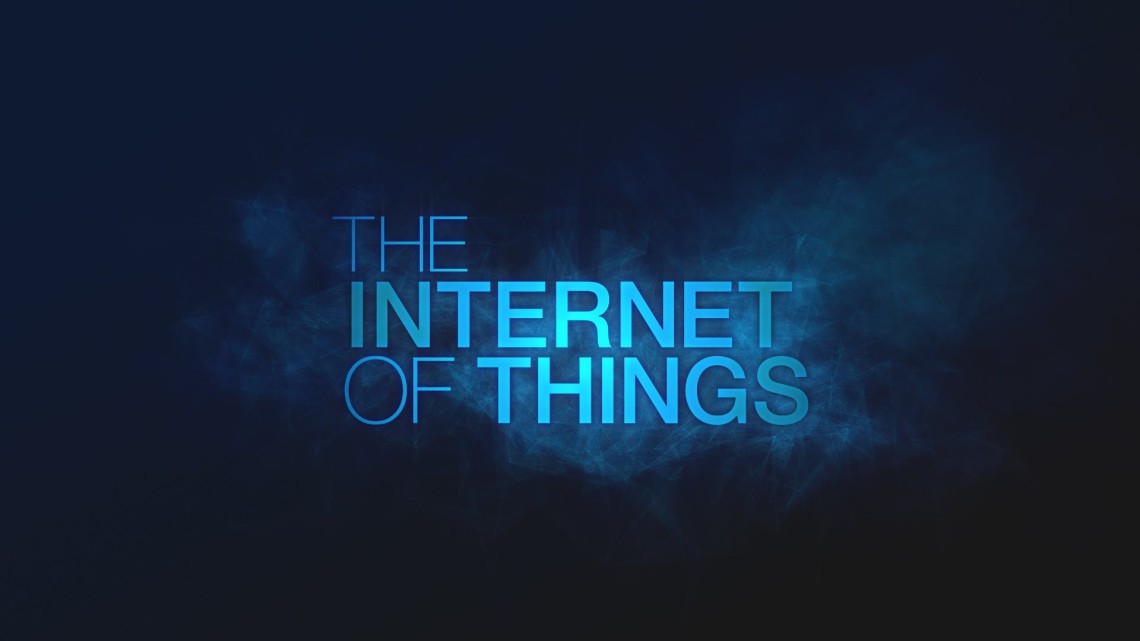
Even though our daily lives are highly dependent on applications of IoT, most of us don’t know what it actually is.
In the simplest of the simple terms, just imagine that things around you begin to connect to you and start providing information in a smarter way.
How would you feel if your alarm clock, knows the traffic on your route to your office and can estimate the time you’ll need to reach there?Wouldn’t it be awesome? Some more sleep yaayy!!!
Again wouldn’t it be great if your umbrella updates you about the weather forecasts? No more drenching in the rain!!
Wouldn’t it be nice if you could control all applications in your house remotely? Get contents of your refridgerator, room temperature, check water usage and diseases in plants, etc.
These are just some of many examples of applications of IoT.
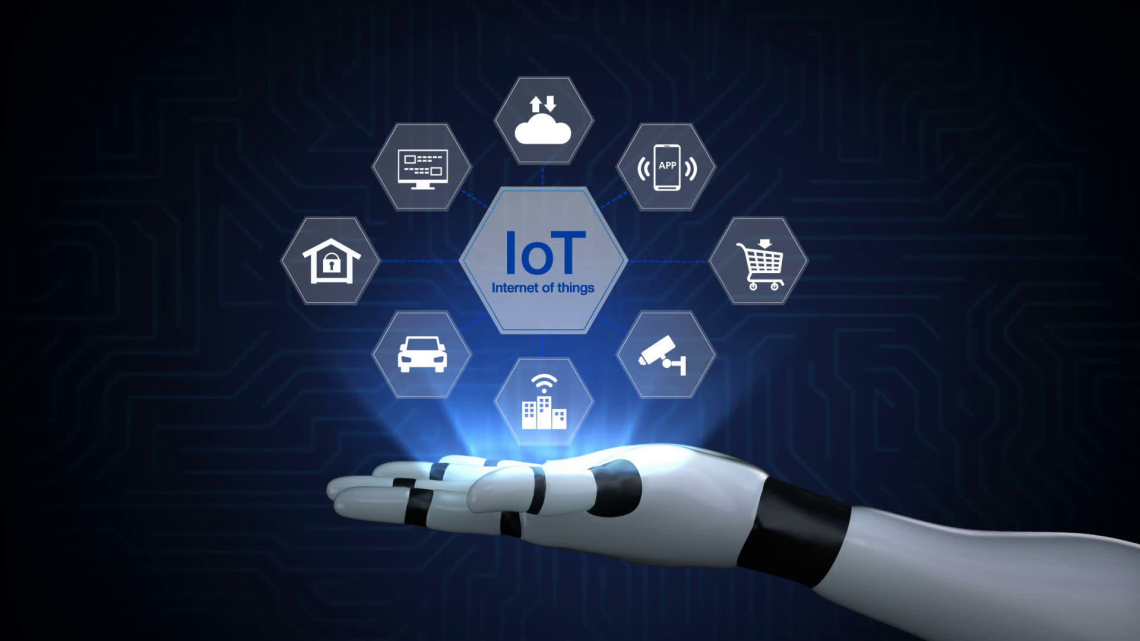
On a broader and more technical term,
The Internet of Things (IOT) is the concept of connecting any device to the Internet and to other connected devices. The IoT is a giant network of connected things and people – all of which collect and share data about the way they are used and about the environment around them using the internet.
The Internet of Things is the logical next step in the evolution of the Internet and is a continuation of machine-to-machine(M2M) networks and technologies, building upon and extending technologies in M2M, mobile technologies and more. IoT stretches further than these roots while encompassing them and became more popular due to several factors, including the lower costs of sensors and enabling technologies and networks.
-
Origins
The term Internet of Things is 16 years old. But the actual idea of connected devices had been around longer, at least since the 70s. Back then, the idea was often called “embedded internet” or “pervasive computing”. But the actual term “Internet of Things” was coined by Kevin Ashton in 1999 during his work at Procter&Gamble. Ashton who was working in supply chain optimization, wanted to attract senior management’s attention to a new exciting technology called RFID. Because the internet was the hottest new trend in 1999 and because it somehow made sense, he called his presentation “Internet of Things”.
Even though Kevin grabbed the interest of some P&G executives, the term Internet of Things did not get widespread attention for the next 10 years.
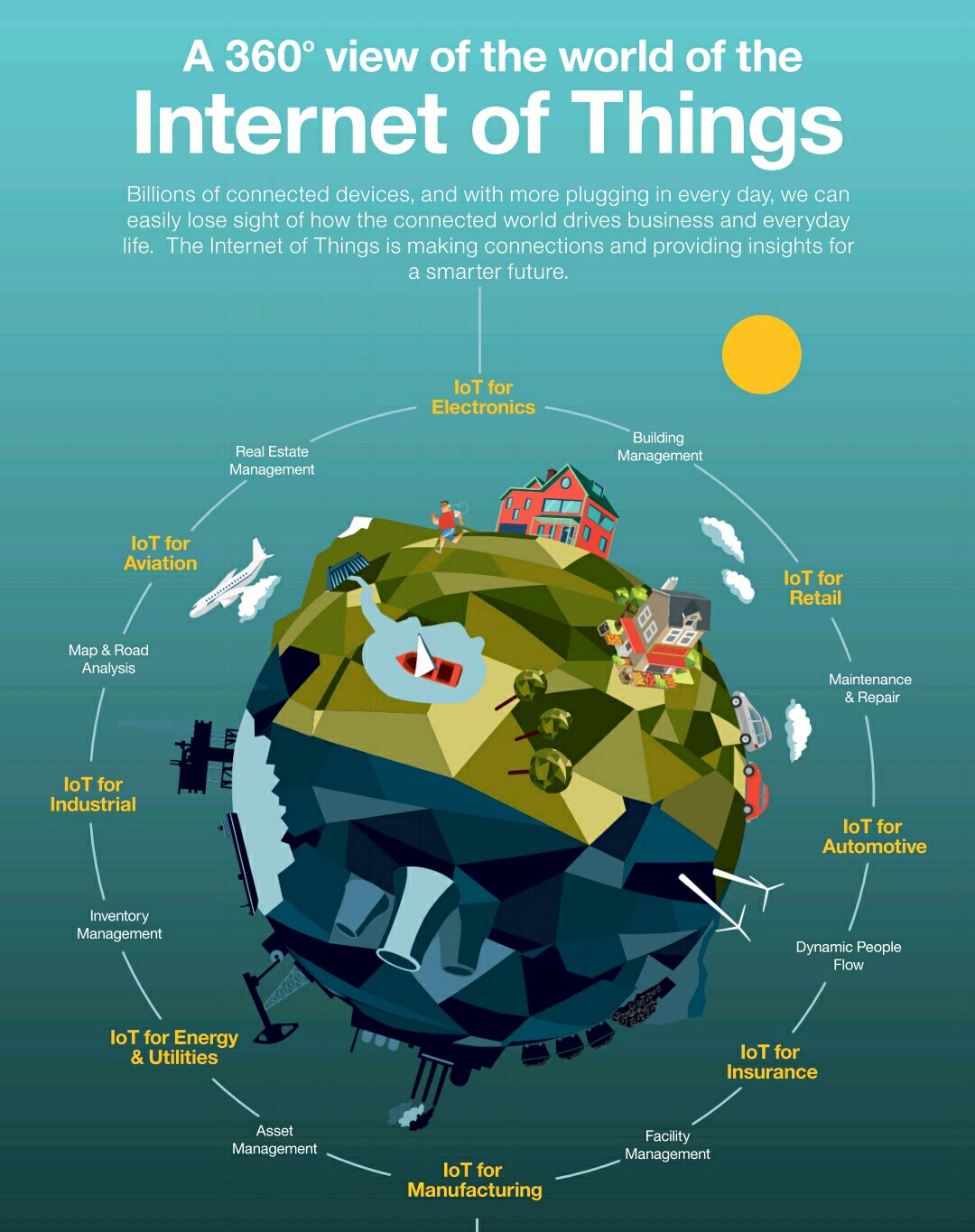
The concept of IoT started to gain some popularity in the summer of 2010. Information leaked that Google’s StreetView service had not only made 360 degree pictures but had also stored tons of data of people’s Wifi networks. People were debating whether this was the start of a new Google strategy to not only index the internet but also index the physical world.
The same year, the Chinese government announced it would make the Internet of Things a strategic priority in their Five-Year-Plan.
The term Internet of Things reached mass market awareness when in January 2014 Google announced to buy Nest (an American home automation producer of IOT devices)for $3.2bn.
-
How it works
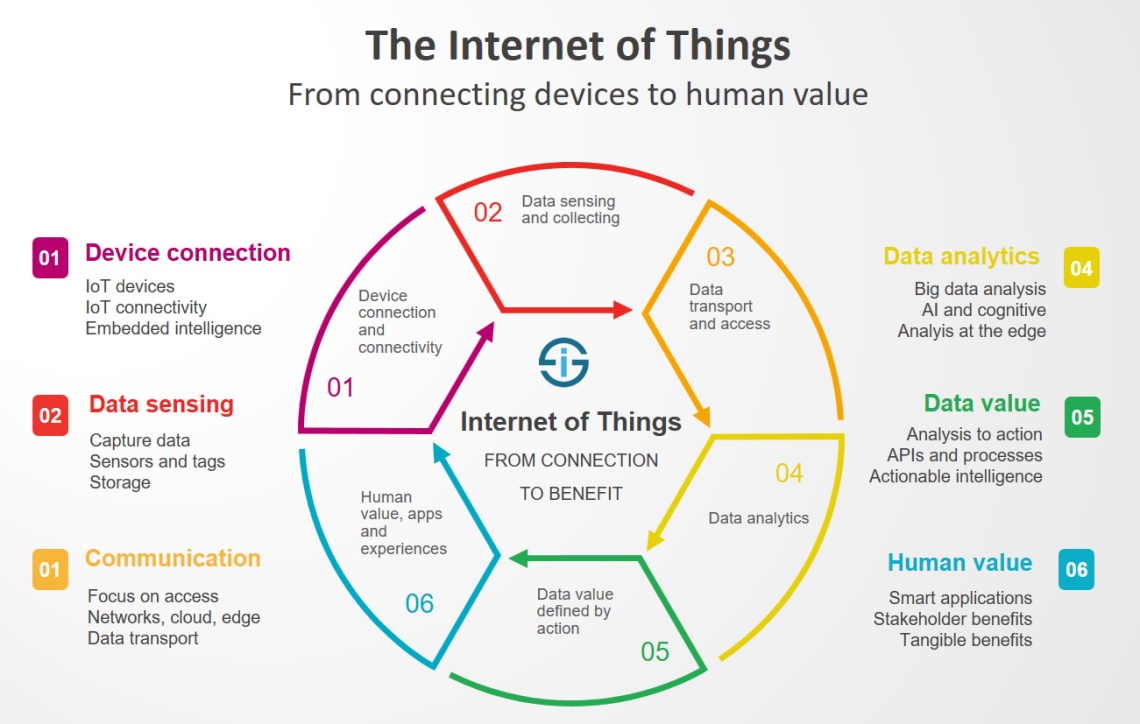
A complete IoT system integrates four distinct components: sensors/devices, connectivity, data processing, and a user interface.
1) Sensors/Devices
First, sensors or devices collect data from their environment like recording temperature or tracking movement of a body in a supermarket.
However, whether it’s a standalone sensor or a full device, in this first step data is being collected from the environment by something.
2) Connectivity
Next, that data is sent to the cloud .
The sensors/devices can be connected to the cloud through a variety of methods including: cellular, satellite, WiFi, Bluetooth, low-power wide-area networks (LPWAN), or connecting directly to the internet via ethernet. All accomplish the same task i.e getting data to the cloud.
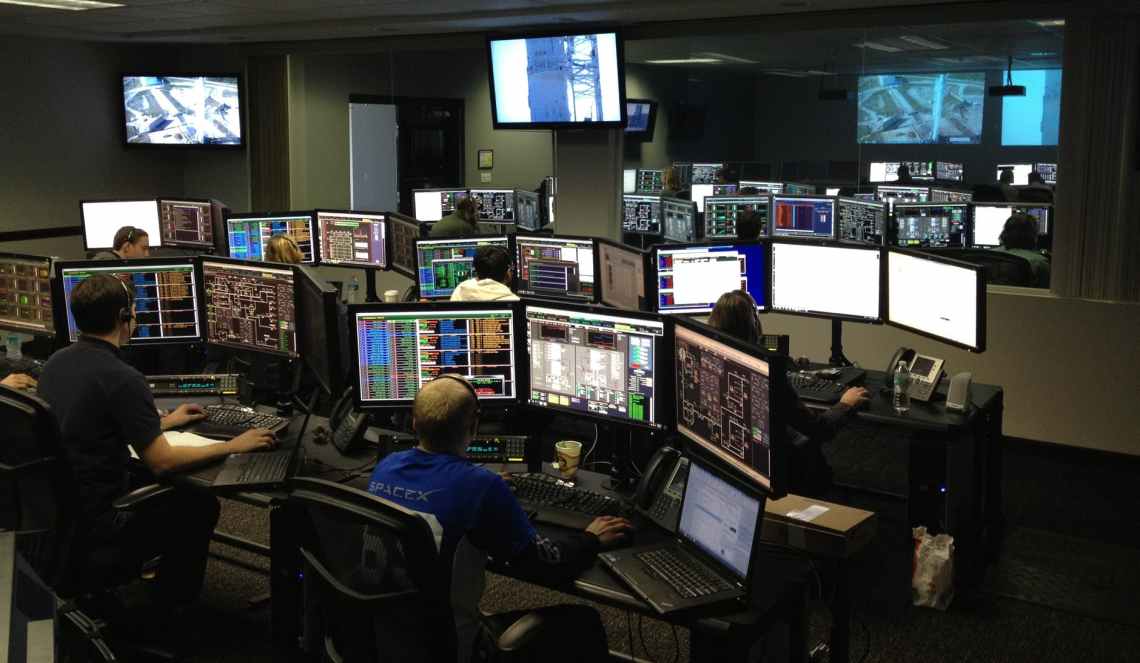
3) Data Processing
Once the data gets to the cloud, software performs some kind of processing on it.This could be very simple, such as checking that the temperature reading is within an acceptable range. Or it could also be very complex, such as using computer vision on a video to identify objects (such as intruders in your house).
4) User Interface
Next, the information is made useful to the end-user in some way. This could be via an alert to the user (email, text, notification, etc). For example, a text alert when the temperature is too high in the company’s cold storage.Also, a user might have an interface that allows them to proactively check in on the system. For example, a user might want to check the video feeds in their house via a phone app or a web browser.
However, it’s not always a one-way street. Depending on the IoT application, the user may also be able to perform an action and affect the system. For example, the user might remotely adjust the temperature in the cold storage via an app on their phone.
-
The exponential growth of the Internet of Things
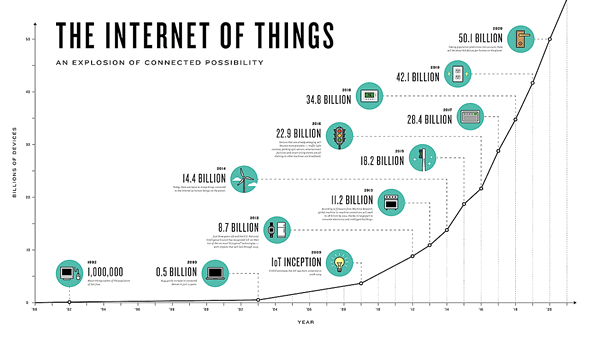
Well, first of all Internet of Things today is effectively hyped (yet, at the same time very real).
As we saw earlier the Internet of Things still has a long way to go and the growth of connected devices or “intelligent things” will continue to rise exponentially over the coming years, as multiple challenges get solved.
In that sense it is safe to say that, despite the fact that we’ve been talking about the Internet of Things for a long time and the fact that IoT in many industries is a reality, we are still in the early years. Although it is expected that, as a term and concept, the Internet of Things will disappear and just become part of a new normal, we are far from there.
The Internet of Things exists in many industries, applications and contexts. Some projects are still in the pilot stage while others form the backbone of important processes, operations and innovations. In other words: the Internet of Things is certainly here but the degree in which it is changing the ways we live, work and conduct business depends on the context.
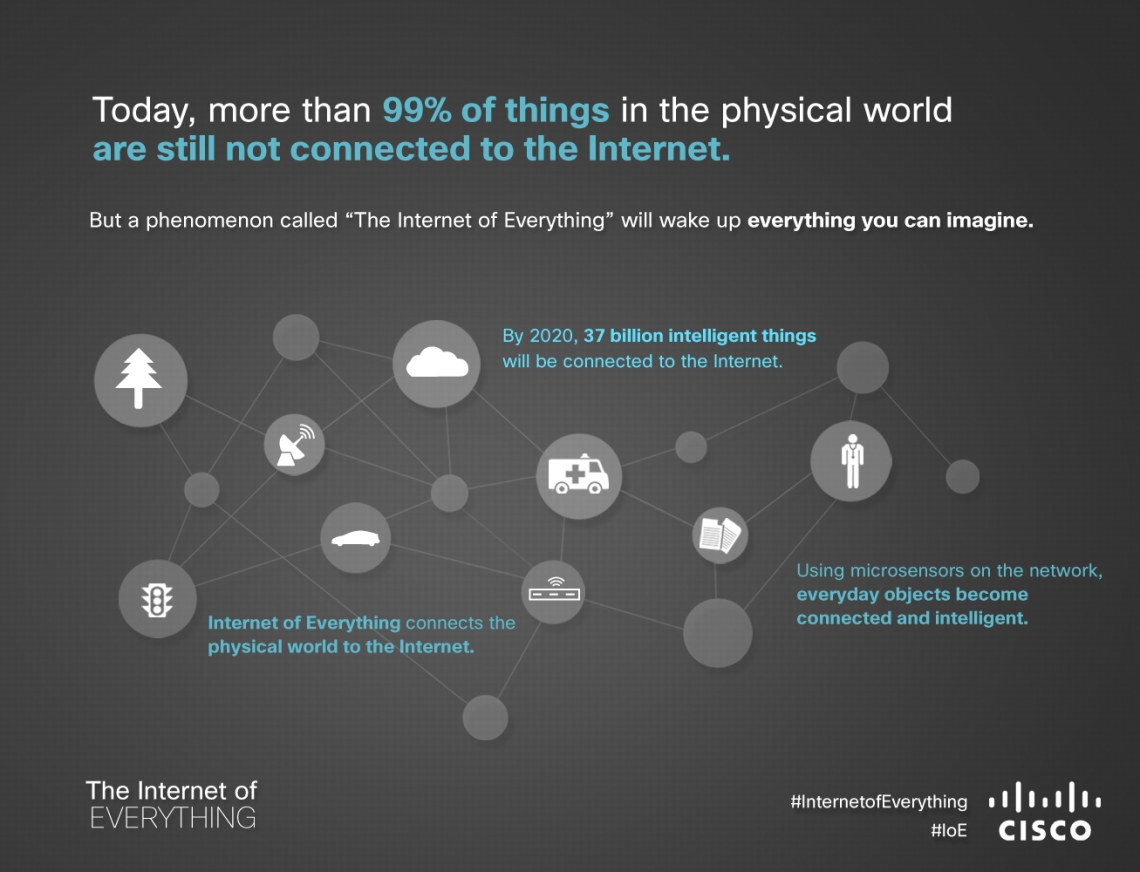
According to the Ericsson Mobility Report 2016, there will be approximately 37 billion connected devices by 2020. The report expects the Internet of Things to surpass mobile phones as the largest category of connected devices with 16 billion connected devices being IoT devices (of the the forecasted total of 37 billion, which includes for instance, smartphones) and the total number may even reach 50 billion.
-
Career Prospects
Top companies like GE, IBM, Cisco, Intel, Dell, Microsoft, Amazon, RedHat have started recruiting engineers in this field.
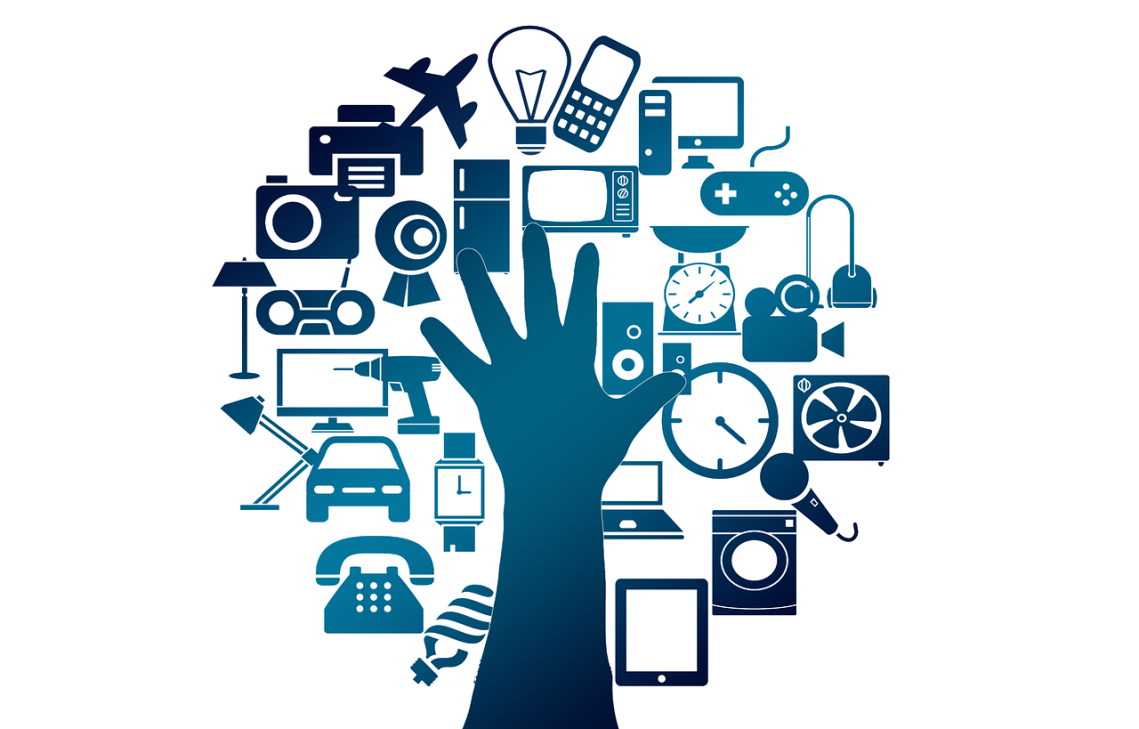
The common skills that you need to get a job in this field are-
1.Embedded systems
2. Networking
3. Computer programming
4. Machine Learning
5. Big Data
6. Network security
7. UI / UX Design
8. Mobile Development
9. Cloud computing
10. Soft Skills
“As Internet of things advances, the very notion of a clear dividing line between reality and virtual reality becomes blurred , sometimes in creative ways.”
-Geoff Mulgan
There’s a lot yet to come,from this Domain, but Internet of Things surely does have a promising future.
Article By- Ishan RFollow us on Instagram Like our Facebook Page Reach us/ Contact us at noveltyinclusives@gmail.com Follow/Subscribe to our Blog for more fascinating contents. (Images: Internet)


Thank you @Ishan_ R _Tripathi for such a essential knowledge about iot and i would love to work on the skill of iot mentioned by you!!!
LikeLike